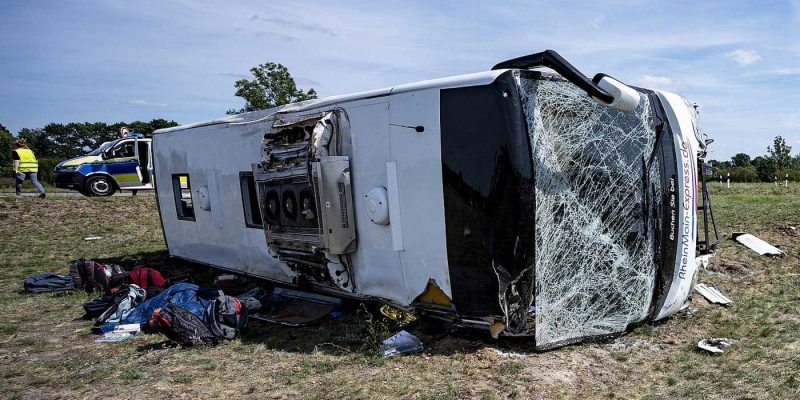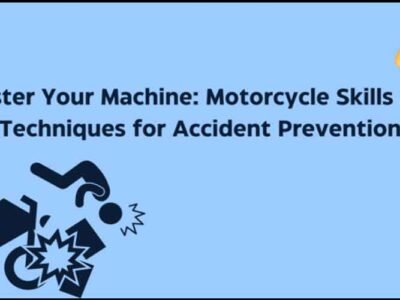A bus accident is a daunting event. In 2019, the American Public Transportation Association found that Americans took 9.9 billion trips on public transportation. Public transportation includes light rail, trolleys, and subways.
Bus transportation includes tourist, school, and city transit. Researchers found that the country sees 63,000 bus crashes annually. Crashes result in an estimated 14,000 injuries. In 2012, the National Transportation Safety Board found that 1,093 fatal accidents involving a bus took place.
Those bus crashes resulted in 1,315 fatalities and 3,471 individuals experienced an injury. Keep in mind that injuries and fatalities related to bus crashes occur to pedestrians and passengers of other vehicles too; it’s not only the bus passenger.
A collision involving a bus involves several people. The following are seven steps to take after being in a bus accident.
1. Remain at the Scene
As a vehicle accident, all individuals must remain at the scene. Every person involved provides helpful information for the police who will document the event for legal purposes.
Some accidents involving a bus are brutal. The impact alone is forceful. It’s common for adrenaline to kick in after this type of experience. Therefore the adrenaline masks pain and other injuries.
Those who leave miss receiving prompt medical attention. Every passenger needs to give their account of the incident to the police. Every perspective and experience is important in the investigation that follows the incident.
2. Call 911
Most people don’t leave home without their smartphones. It comes in handy in this situation. Depending on the type of crash, if a person can grab their phone and it works, use it to call 911.
The more people involved, the more urgent it becomes for the police, ambulances, and the fire department to arrive at the scene promptly. Even if someone else reports the incident, it doesn’t hurt to call 911 too. It ensures that the proper authorities know about the incident.
Buses are large vehicles. They easily block traffic if they remain on the road. When they roll off the side of the road, people can remain stuck inside. The sooner everyone exits the bus, the sooner they receive medical attention.
3. Seek Medical Attention
The injuries sustained by an individual involved in a bus accident vary. It depends on the hits sustained by the vehicle.
When the ambulances arrive on the scene, every passenger goes through triage. First responders treat the obvious injuries and ensure that they make their way to a nearby hospital. Other passengers receive proper care on-site for scratches and bruises.
All vehicle injuries don’t show up immediately after an accident. It’s important to speak with a medical first responder anyway. It helps the individual understand what to expect post-incident.
If an injury appears a day or two later, the passenger can explain to the medical professional the reason for the soreness or pain.
4. Help Render Medical Attention
Depending on the accident’s location, medical first responders arrive as they’re available.
In situations like this one, adrenaline helps people take action to help others. Some passengers may sustain significant injuries such as bleeding, broken bones, or severe trauma.
Those who can help should help others. It’s important to remain good humans during moments of crisis.
5. Document What You Remember
On a bus trip, passengers don’t pay too much attention to the road. The point of taking public transportation is to hand over the driving responsibilities to a professional.
However, document what you remember about the incident. This information helps the police conduct their investigation. It also helps build a case if the passenger decides to file a claim against the liable party for damages.
6. Gather Evidence
If the passenger decides to file a claim for damages, evidence helps build their case too. Evidence includes the clothes they wore, damage sustained to electronic devices, and medical records.
It helps to take pictures of the scene too. Passengers are victims of this type of accident. To put together a complete case, speak with a legal professional promptly.
7. Speak with a Personal Injury Attorney
At the moment and aftermath of a bus crash, a lot happens. It’s a good idea to speak with a personal injury attorney shortly after the incident. The legal professional explains to a passenger their rights.
In most accidents, someone is at fault. Passengers who sustain injuries, experience a loss of income, and trauma benefit from understanding personal injury. For more information, visit this guide on personal injury provided by JT Legal Group.
Conclusion
All vehicle accidents are daunting. A bus accident adds a layer for several reasons. The individual is at the mercy of the driver. As the vehicle comes to a complete stop, the individual must brace for impact.
Once things settle down, seek medical treatment, help provide medical treatment, and document the events of the accident. The information helps those who hire a personal injury attorney.


















Comments